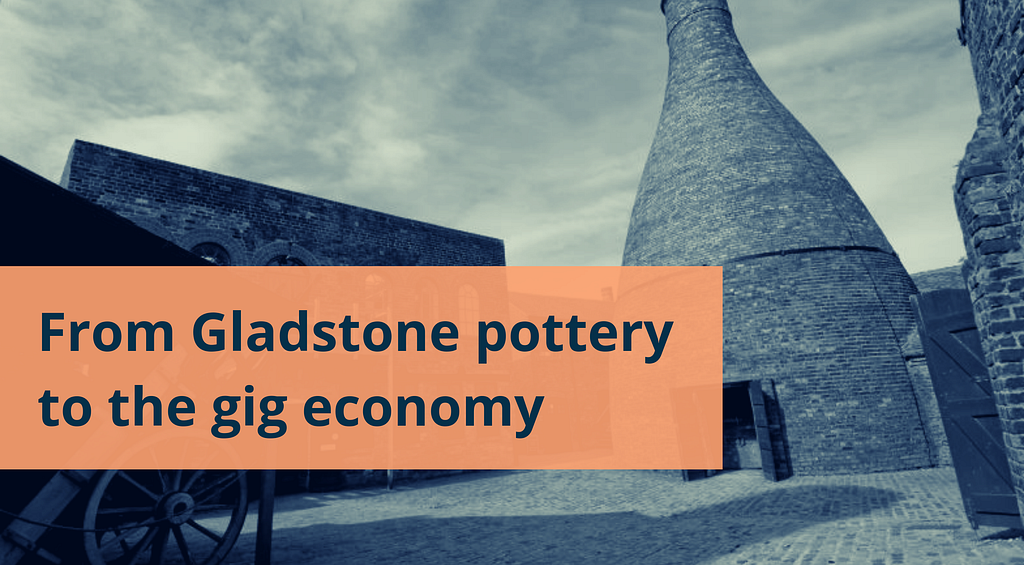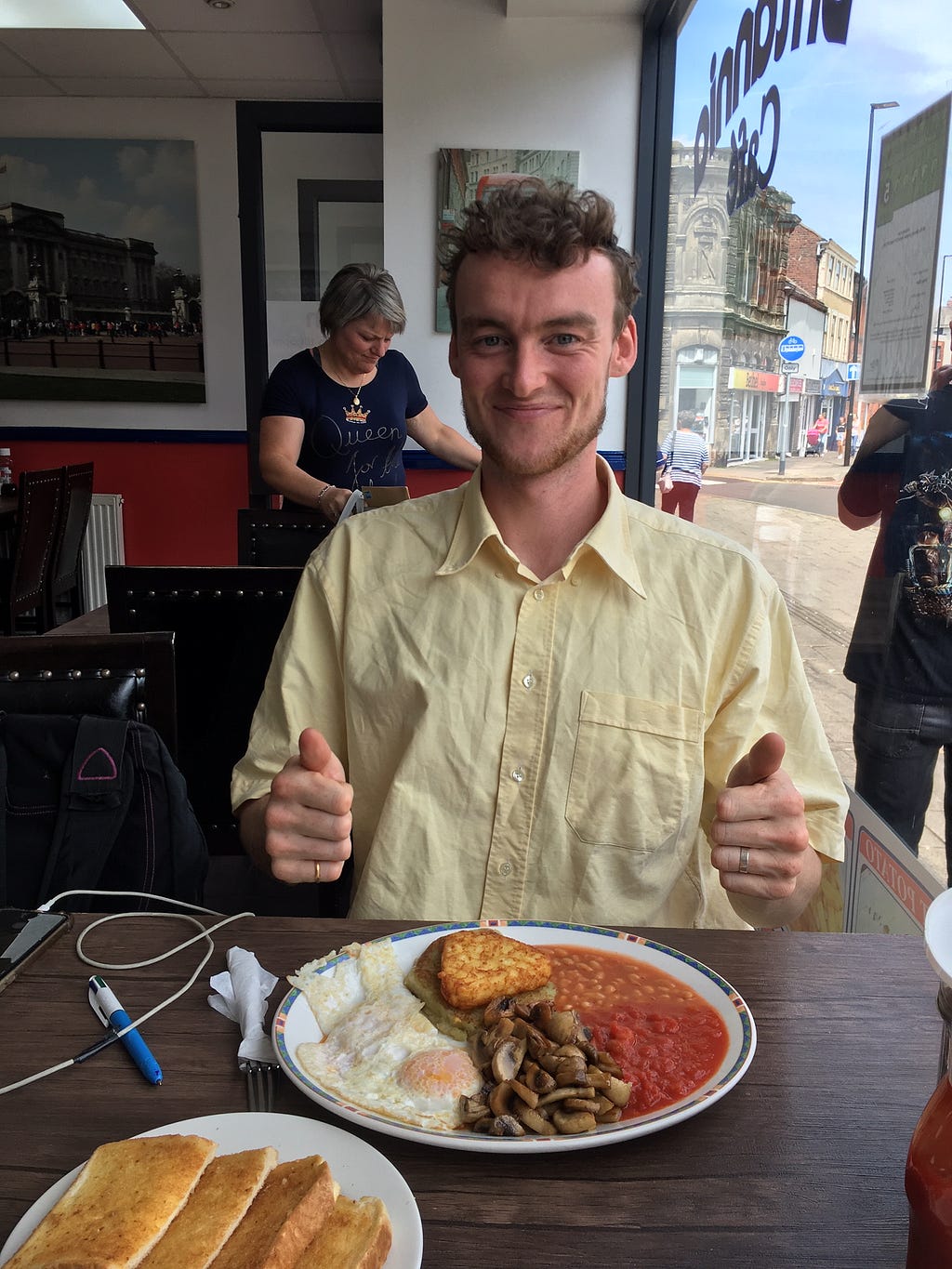From Gladstone pottery to the Gig Economy
A Better Work Dispatch from Stoke-on-Trent
We are currently undertaking in-depth, qualitative research with gig workers to better understand their needs and help develop ways for them to manage their money and progress in their careers.
Here are some brief insights from a recent research trip to talk to Uber drivers in Stoke-on-Trent, Staffordshire, about working via a digital platform. We also share a few things we learnt about doing contextual research of this kind.

Stoke-on-Trent is perhaps best known for its rich heritage of ceramics (we’d highly recommend the Gladstone Pottery Museum), and its cult status amongst sports fans as the spiritual home of “route-one” football.
But it’s also home to one of Uber’s Greenlight Hub support centres and, as a city with a population of around 270,000, is amongst the smallest places in the UK to have a dedicated fleet of drivers (who according to one 2017 estimate number around 47).
So as part of our research on the gig economy, we travelled to Stoke to find out how the lives of these drivers contrast with those in bigger metropolitan areas. With the big players in the gig economy debate — platforms, media and policymakers — mostly residing in London, it’s important to give a platform to people outside of this bubble to share their stories.
James also wanted to explore his passion for scouring charity shops and enjoying the local cuisine.

What we learnt about contextual research
This trip was our first foray into learning more about the experiences of people working in the gig economy in context (although we’d conducted a few Skype interviews before), and we learnt nearly as much through the challenges of doing contextual research as from people we spoke to. So if you’re thinking about adopting a similar approach, here are a few tips from us:
- Embrace the weirdness. Many of the drivers we met were, understandably, slightly confused by our request to interview them as opposed to getting a lift to the GP surgery or supermarket. Sharing a laugh about how unusual the request is, helped to break the ice for both us and the drivers.
- Allow time in the day to deal with the unexpected. At one point I had to walk to a motor-way service station to avoid being matched with the same driver for a third ride in a row. Then there was the unexpected negotiation with the lovely staff at the Gladstone Pottery Museum to use their car-park for interviews. Both activities ate up precious research time. Allow room in your schedule for them.
- When explaining why you’re doing research, less is more. Rambling explanations of the Doteveryone backstory and our research vision generally led to more confusion and suspicion. “We want to understand the lives of people who use digital platforms to find work, to help develop ways for them to manage their money and progress in their careers” was a more helpful and natural opening statement. Create space for people to ask as many follow-up questions as they want, and be crystal clear on how the interview data will be used and managed before starting the conversation (consent is a must, obviously).
- Respect people’s time. Make sure you’re not stopping people from picking up their next gig or seeing their family — if you agreed 45 minutes, stick to it! Compensate the people you speak to fairly, and if your 100% not sure you’re paying them enough for their time then you’re probably not.
What we learnt about work in the gig economy
The drivers we spoke to all lived wonderfully different lives. One person had a long-term plan to set up an IT company; another simply wished he had more time to play Sunday cricket.
In the rush to define and understand the gig economy, it is all-too-easy to homogenise the 4 million or so people who work in it. But despite this diversity of experience, we still saw some common themes emerge:
- Workers need support to navigate the seasonality of gig work. When 10,000 students at Keele University go home for the summer, drivers lose a sizeable proportion of their customer base. They are left to second-guess how much to save in the winter to balance this loss and this was a source of significant uncertainty and worry.
- We need to talk more about physical well-being in the gig economy. Beyond the loss of cricket-time, many drivers worried about the health impact of spending 40+ hours a week sitting behind the wheel. This can have a knock-on effect as well. One person with aspirations to return to more hands-on manual work was worried they would not be fit enough to do so. On the plus side, however, the customer ratings systems made drivers felt more protected from aggressive and volatile punters (particularly on Saturday nights…)
- Flexibility can be a blessing and a curse. Many drivers worked around their family schedules, doing their bit in the school-run, spending quality time with partners and creating time to visit parents abroad. But this flexibility also led to insecurity and unpredictability, with some telling us how they struggled to settle into a routine. Others feared that drivers who have the time to take more shifts are driving down prices and shifting the norms around how many hours platforms expect drivers to work.
These conversations offer a small window into the day-to-day reality of these workers’ lives. Over the next two months, we will be speaking with cleaners, handymen, micro-taskers, food couriers and other people who rely on digital platforms to find work, to understand how the gig economy is affecting people’s financial health and opportunities to progress in their career.
We will be working with these people to turn our insights into real-world solutions, co-creating prototype “social safety nets” that act as a counterbalance to precarious and unpredictable gig work.
If you’d like to be involved or are just keen to hear more, get in touch via [email protected].

From Gladstone pottery to the Gig Economy was originally published in Doteveryone on Medium, where people are continuing the conversation by highlighting and responding to this story.